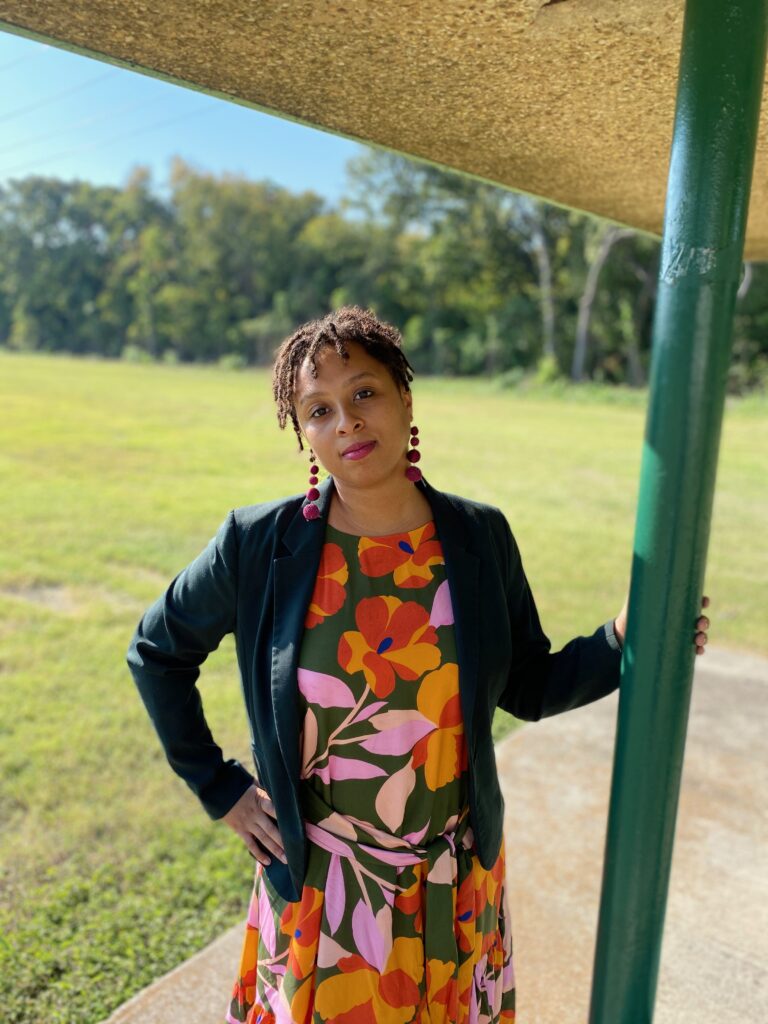
English Ph.D. candidate Micah-Jade Coleman Stanback
Stanback’s interest in children’s literature and the idea of “cultural notion of innocence” began with a fortunate coincidence at her undergraduate and master’s alma mater of the University of Southern Mississippi.
“I’ve enjoyed reading since I was a kid, but in my junior year of college, I took a children’s and Young Adult (YA) literature course that emphasized seeing the literary value of stories for young people,” Stanback said. As it turned out, Southern Miss housed the de Grummond Children’s Literature Collection, one of North America’s most extensive collections of children’s literature. As her studies continued, Stanback because more interested in the idea of childhood innocence and in particular “who gets to be innocent, especially by our cultural standards of innocence?”
Now a Ph.D. candidate, Stanback’s dissertation studies how 19th-century Black authors, such as Harriet Jacobs, portrayed ideas of care for Black children versus white authors of the time, like Harriet Beecher Stowe. According to Stanback, Stowe’s treatment of one character, a Black child named Topsy, at the hands of a white woman named Mrs. Ophelia, is a problematic look at how white authors of the period viewed Black children, even those like Stowe who was opposed to slavery.
“Miss Ophelia’s idea for how to ‘save’ Topsy is consumed by respectability politics and later in the novel, she prescribes an ‘acceptable’ trajectory for Topsy by instructing her to choose teaching as a profession and expecting Topsy to reinforce Ophelia’s liberal, albeit racist teachings,” Stanback said.
“But what I argue is that had Miss Ophelia had a genuine acceptance and appreciation of Topsy, she would not only be concerned with her survival as a Black girl, but also her aspirations, joy, faults, and fears—the things that make us human,” she continued.
Stanback is a firm believer in the value of studying children’s literature, something she said she has been challenged for pursuing in the past. “In many social issues we evoke ‘What about the children,’ but then actually don’t take the time to listen to what they might want and need,” she said. “They have autonomy. Add the marginalization of race to the mix, Black children are double ignored in our society,” Stanback added.
“During this Black History Month we need to remember that racial violence isn’t only limited to adults, but most importantly, Black kids have a voice that needs to be heard.” – Micah-Jade Coleman Stanback on Black children’s roles in discussions of racism
The research, involving spending long periods exposed to troubling, racist literature, can be taxing, but the work can be rewarding and even healing, according to Stanback. “My work is also concerned with an ethic of healing and doing healing work means that you sometimes have to dig through the weeds to get to the soil that will produce a new way of thought and growth,” she said.
Black children, said Stanback, have played important roles in our past and present discussions of race and racism. “During this Black History Month we need to remember that racial violence isn’t only limited to adults, but most importantly, Black kids have a voice that needs to be heard,” she said, “Their experience matters!”
